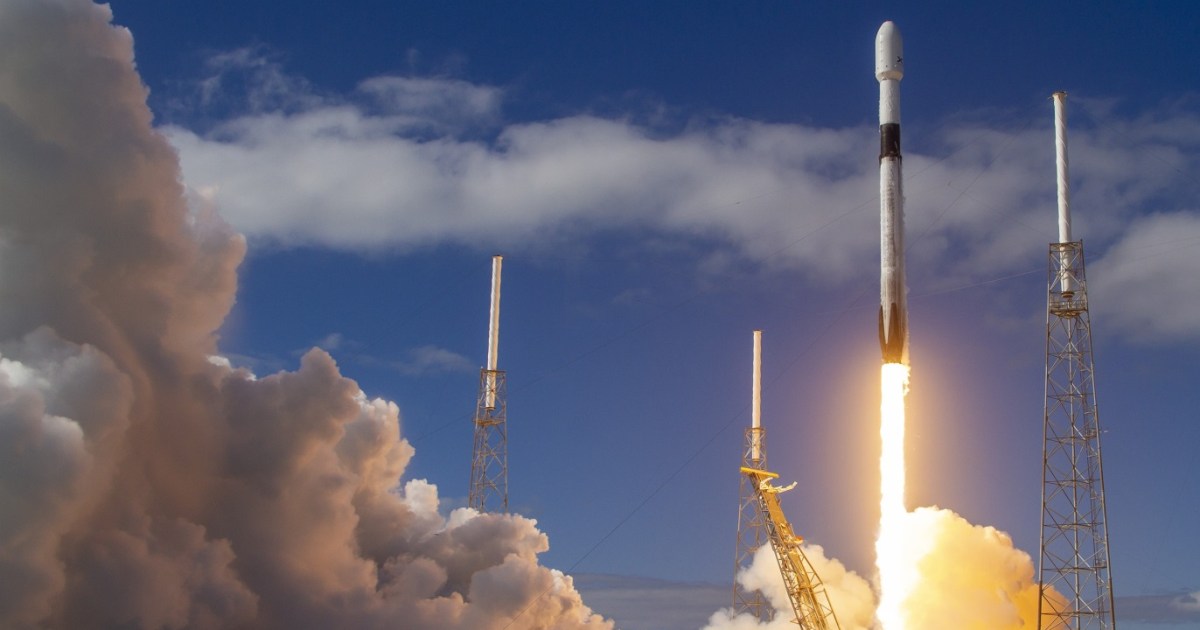A recent study revealed that the amount of radiation leaks produced by the second generation of Starlink satellites exceeds 30 times what was released by the previous generation, and as more of these satellites continue to be docked in near-Earth space, this matter could hinder astronomers. In space surveillance.
The Starlink project represents one of the main projects that SpaceX is working on. Work began on sending the first batch of satellites in mid-2019, and the total number of satellites sent by the company until last September reached 6,426 satellites.
Fears from the first moment
From the first moment, the International Astronomical Union expressed its concerns about sending satellites in large numbers in the near space domain, saying that these satellites pose a major threat to current and future important astronomical infrastructure. The statement at the time urged that decision makers take firm and coordinated steps to study the extent of The resulting negative impact.
Some research has focused on studying the negative impact resulting from the spread of satellites, and in July 2023 a study was issued indicating the extent of the leakage of electromagnetic rays. These rays appear in the form of radio waves, emitted in multiple directions while satellites transmit signals to Earth.
The researchers concluded that these radio frequencies are similar to the rays emitted by distant cosmic bodies, such as stars, black holes, and pulsars, and it is possible that these rays interfere and interfere with astronomers’ work in observing celestial bodies.
During the past year and a half, SpaceX has worked to replace old first-generation satellites with new ones from the second generation. The first launch of the second generation took place in early 2023, and the company said that it is smaller, more powerful, and maneuverable compared to its predecessors, and it was not known at the time. Whether the company has addressed the issue of radio radiation leakage or not.
The problem is exacerbated and scientists warn of space pollution
After the launch of the new version of the satellites, a group of researchers worked to study them using the most powerful ground telescope capable of capturing radio rays in space, which is the “Lofar” radio telescope, which is a network of radio dishes extending across 8 European countries.
The results showed that the amount of leaked radiation increased alarmingly by 32 times, when comparing the first and second generations of Starlink satellites, according to the study published in the journal “Astronomy and Astrophysics” in September 2024.
Researchers warn that radiation leakage from new satellites, in addition to the large number of satellites expected to enter their orbits in the coming years, may seriously harm the ability of radio telescopes to monitor and distinguish waves, and thus hinder astronomical scientific research.
A danger that may blow through Earth’s window to the universe
The astronomer at the Dutch Institute and the lead author of the study, Sis Basa, explained in an official press release that the radiation emitted by the second generation satellites is up to 10 million times brighter compared to the faintest celestial bodies that can be observed in the sky, and the researchers likened this difference to the variation in brightness. The weakest stars visible to the naked eye are with the brightness of the full moon when it is full, which highlights the seriousness of the interference caused by these satellites to astronomical observations.
Astronomer Federico Di Frono, co-author of the study from the Netherlands Institute for Radio Astronomy, also warned: “We may be rapidly approaching an irreversible turning point, where astronomers lose the ability to study the universe due to unstable electromagnetic radiation emitted by satellites, and we must Take urgent action in this regard.”
According to the followed plan, the pace of proliferation of Starlink satellites is increasing rapidly, as more than 1,300 satellites were launched in 2024 alone, and there are other satellites belonging to international companies such as Amazon and the Chinese government that have begun to enter the space and satellite Internet industries, and researchers estimate that The number of satellites in near-Earth orbit may reach 100,000 by the end of this decade.




